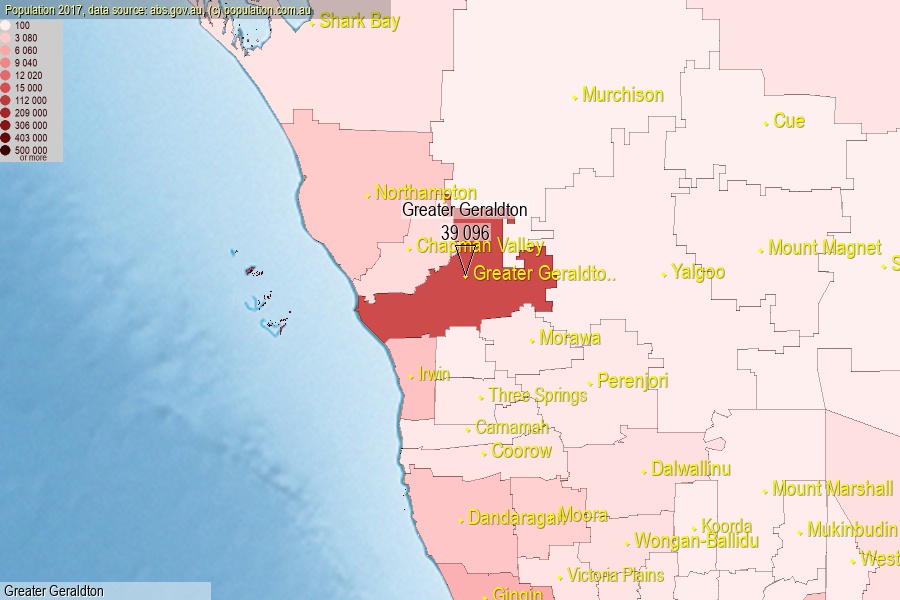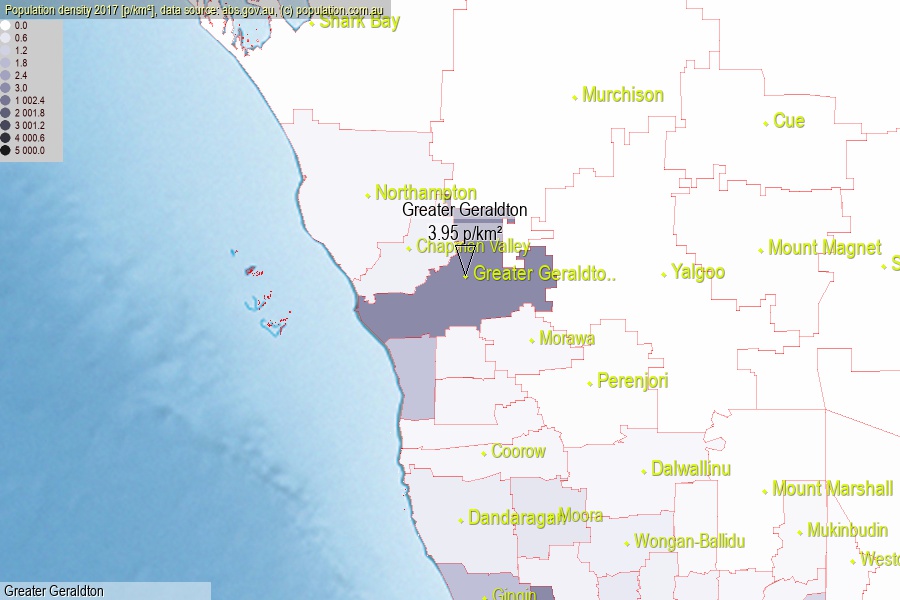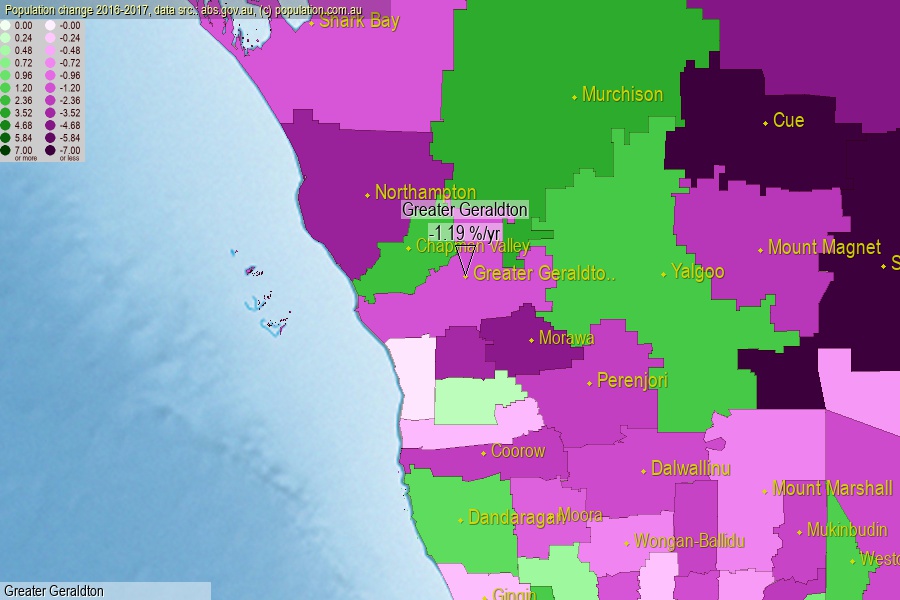 population.com.au
population.com.auLast official estimated population of Greater Geraldton City (as Local Government Area) was 39 096 people (on 2017-06-30)[2]. This was 0.16% of total Australian population and 1.508% of WA population. Area of Greater Geraldton is 9 909.00 km², in this year population density was 3.95 p/km² . If population growth rate would be same as in period 2016-2017 (-1.19%/yr), Greater Geraldton population in 2025 would be 35 524. [0]



Click to enlarge. Greater Geraldton is located in the center of the images.
Population [people], population density [p./km²] and population change [%/year] [2]
[1996-2001] +1.78 %/Y
[2001-2002] +0.79 %/Y
[2002-2003] +0.17 %/Y
[2003-2004] +0.31 %/Y
[2004-2005] +1.65 %/Y
[2005-2006] +2.04 %/Y
[2006-2007] +0.21 %/Y
[2007-2008] +2.57 %/Y
[2008-2009] +2.13 %/Y
[2009-2010] +0.93 %/Y
[2010-2011] +1.27 %/Y
[2011-2012] +1.94 %/Y
[2012-2013] +1.93 %/Y
[2013-2014] +0.69 %/Y
[2014-2015] -0.39 %/Y
[2015-2016] -0.98 %/Y
[2016-2017] -1.19 %/Y
[0] Calculated with linear interpolation from officially estimated population
[1] Read more about LGA and Australian Statistical Geography Standard (ASGS) on abs.gov.au
[2] Population data from Australian Bureau of Statistics (Population and density: 2017; change: 2016-2017)
[3] Digital Boundaries: Australian Statistical Geography Standard (ASGS) 2016.